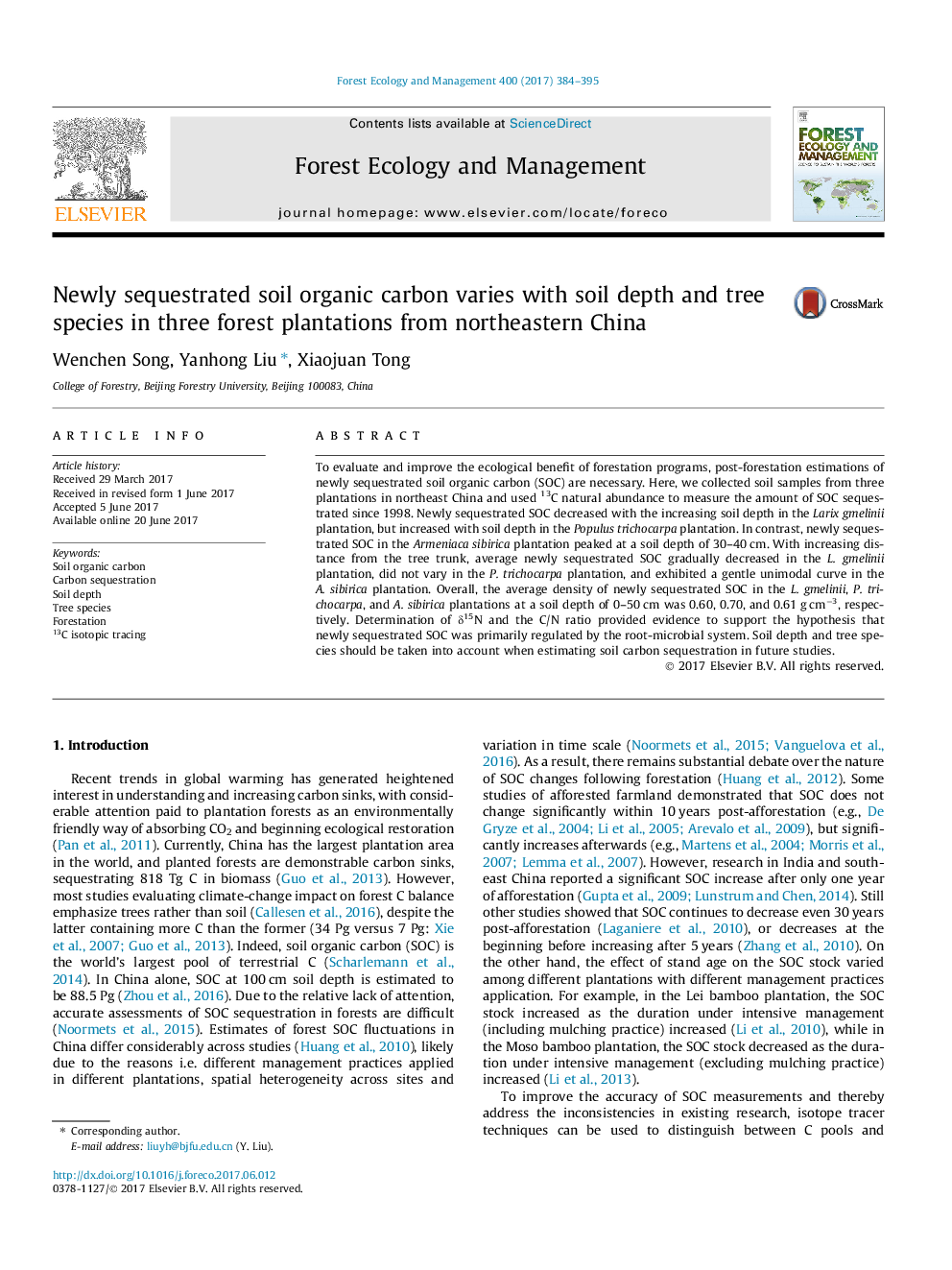| Article ID | Journal | Published Year | Pages | File Type |
|---|---|---|---|---|
| 6459262 | Forest Ecology and Management | 2017 | 12 Pages |
â¢13C natural abundance was used to measure newly sequestrated soil organic carbon.â¢Spatial distribution of newly sequestrated soil organic carbon in three plantations.â¢Newly sequestrated soil organic carbon affected by tree species.â¢Î´15N and C/N ratios reveal contribution of rhizomicrobes.
To evaluate and improve the ecological benefit of forestation programs, post-forestation estimations of newly sequestrated soil organic carbon (SOC) are necessary. Here, we collected soil samples from three plantations in northeast China and used 13C natural abundance to measure the amount of SOC sequestrated since 1998. Newly sequestrated SOC decreased with the increasing soil depth in the Larix gmelinii plantation, but increased with soil depth in the Populus trichocarpa plantation. In contrast, newly sequestrated SOC in the Armeniaca sibirica plantation peaked at a soil depth of 30-40 cm. With increasing distance from the tree trunk, average newly sequestrated SOC gradually decreased in the L. gmelinii plantation, did not vary in the P. trichocarpa plantation, and exhibited a gentle unimodal curve in the A. sibirica plantation. Overall, the average density of newly sequestrated SOC in the L. gmelinii, P. trichocarpa, and A. sibirica plantations at a soil depth of 0-50 cm was 0.60, 0.70, and 0.61 g cmâ3, respectively. Determination of δ15N and the C/N ratio provided evidence to support the hypothesis that newly sequestrated SOC was primarily regulated by the root-microbial system. Soil depth and tree species should be taken into account when estimating soil carbon sequestration in future studies.
